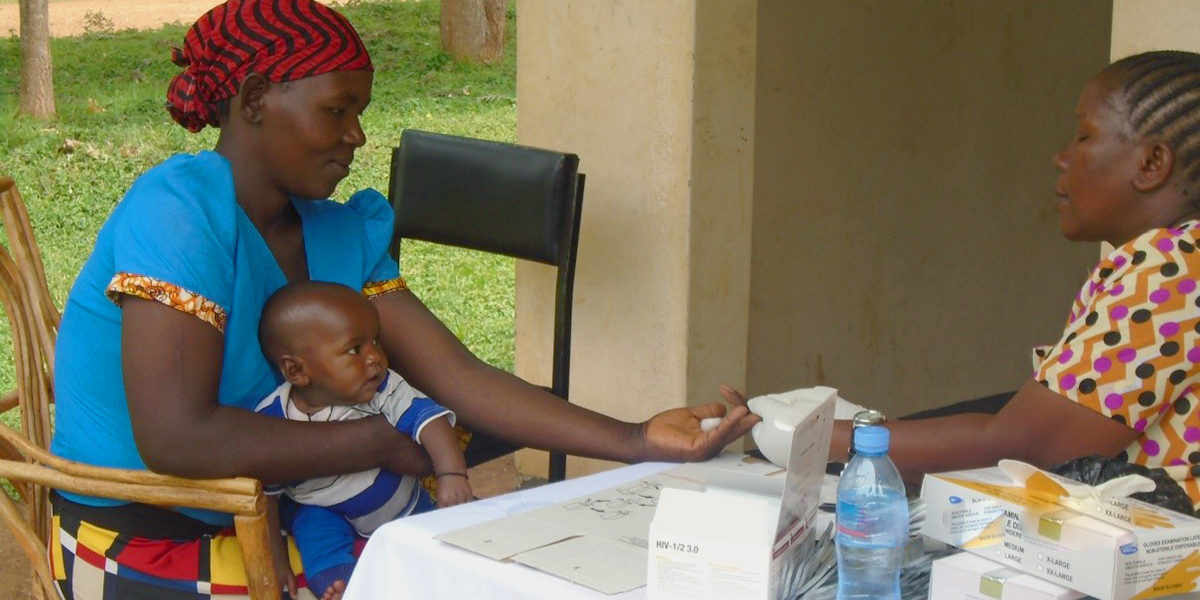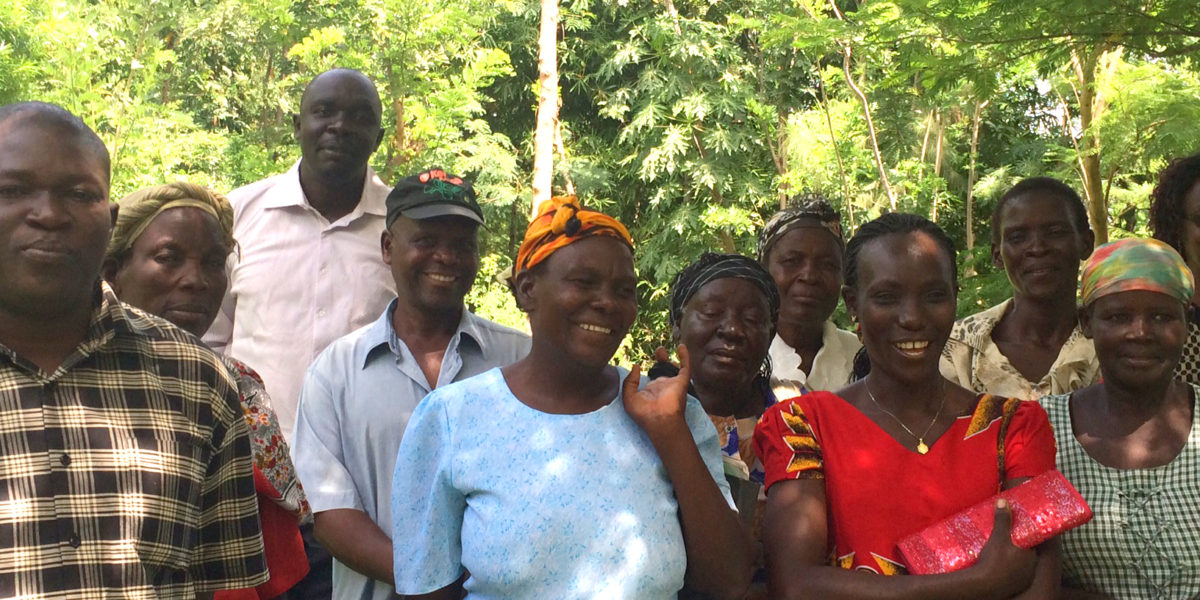HIV/AIDS Interventions and Reducing Stigma in East Africa
“People think that I’m not infected just because I have learned how to take care of myself. I am busy in productive activities which have really changed my economic life status.”
Esther, a person living with the Human Immunodeficiency Virus (PLHIV) from the World Neighbors (WN) program in Tanzania
Close to 25.6 million people in sub-Saharan Africa, out of the global total of 36.7 million are living with HIV, which is about 70% of the global total. This has necessitated the incorporation of the prevention and management of the pandemic into WN’s development programs as a priority development issue in Africa. Acquired Immune Deficiency Syndrome (AIDS) is caused by HIV that weakens the body’s immune system, making it susceptible and unable to recover from opportunistic diseases that may lead to death. The pandemic is caused by factors that are sexual (primarily heterosexual contact), socio-cultural (such as widow inheritance, female genital cutting, polygamous unions, and forced or early marriages of girls) and reproductive (e.g. mother-to-child transmission). Most infections occur among people in the most economically productive age groups. Hence, it is a serious public health and socio-economic problem. In WN’s programs in East Africa, HIV prevalence rates are significantly higher than the national averages, thereby necessitating a concerted effort to contain the situation.
The effect of the pandemic is devastating as it impacts all spheres of human development. It reduces household productivity and incomes as the morbidity of the affected members reduces their participation in income generation and a large proportion of household resources is spent on medication. The pandemic also results in the increase of the number of widows, and orphans and vulnerable children; increase in the number of child-headed households when both parents die; making children drop out of school due to lack of fees; and forcing orphaned young girls into prostitution in order to fend for their siblings.
WN’s programs treat HIV as a transversal (cross cutting) theme and apply different approaches to address the issue among various categories of people infected and affected by the pandemic: orphans, widows/widowers, expectant mothers and the community at large. WN’s programs begin by facilitating a process with the community during which their challenges are identified and prioritized for action. If HIV/AIDS is identified as a challenge, then WN will partner and collaborate with the relevant government departments to provide mobile health clinic services to the community where voluntary counselling and testing (VCT) is done. VCT is a confidential session where an individual is counselled in private about HIV followed by voluntary testing for the virus which causes AIDS, followed by further counselling irrespective of whether the result is positive or negative. Those whose results are positive are facilitated to form ‘support groups’ through which they are further counselled and encouraged to provide support to each other by sharing their experiences. These support groups are considered a vulnerable category that WN targets for intervention in initiating income generation activities (through savings and credit) in addition to being trained in proper nutrition and facilitated to have kitchen gardens planted with nutritious traditional vegetables and fruit trees and also engage in small-scale livestock rearing.

Also in the category of vulnerable groups are the orphans and vulnerable children. WN has taken steps in helping these orphans by educating the community and the orphans themselves together with their caregivers on the prevention of HIV infections and care of the affected. The orphans and their caregivers have been supported to initiate income generating activities, often focusing on rearing small animals such as goats, rabbits and poultry. Raising of goats and poultry are the most popular activities because the orphans consume the milk and eggs as part of the nutrition boosting strategy in addition to getting income through the sale of offspring, milk and eggs. The money generated is used for household upkeep, school fees and paying for health services.
When WN launched development programs in some communities in East Africa, some people living with HIV were so weak that they were bed-ridden. WN, in partnership with the government health departments, initiated the home-based care programs. Home based care is the act of nursing a patient in terms of medication, nutrition and hygiene outside a health facility. In most cases it is the family members who take care of their sick relatives. WN helped train the family members who were charged with this difficult task. Due to WN’s interventions, there are currently no bed ridden PLHIV in the program areas. Due to effective home-based care and nutrition education, many of the former bed-ridden people are now participating actively in program activities and living active lives despite the virus.
An expectant mother who is infected can also transmit the virus to her unborn or born child. Hence the strategy known as the ‘prevention-of-mother to child transmission’ has been devised to reduce the transmission during pregnancy, labor, delivery and post-delivery through breastfeeding. Sensitization and awareness campaigns are mounted among women to attend ante- and post-natal clinics in order to detect if the mother is HIV positive and then efforts are made to teach her how to avoid infecting the baby, including putting her on anti-retro viral therapy.

WN applies various strategies to educate the community on HIV/AIDS prevention, care and support. One way is the training of the volunteer youth theatre groups to pass information about the pandemic by staging entertaining dramas with simple and clear HIV messages in public places and during public functions. Because the majority of the new infections are found among the youth aged between 15 through 24, another strategy is to use youth peer educators. Due to the breakdown in traditional cultural practices where the elders used to provide sex education to the youth, the current situation is that the youth have very scanty information on sexuality which puts them at risk of contracting HIV. Therefore, WN trains youth volunteers who can then advise their peers on how to avoid infections and those already infected on how to live positively and avoid reinfection as well as infecting others. In addition, WN uses school health clubs in both primary and secondary schools as a platform to pass HIV/AIDs messages to the youth and the communities as a whole.
Thirdly, WN has trained community health volunteers who also play an important role in information dissemination. They offer door-to-door information and raise public awareness and offer support to those already infected by teaching about proper nutrition, counseling on behavior change, and linking them to health facilities for specialized support and follow up. Finally, in addition to the practice of members of the support groups sharing information and encouraging each other, support group members are also encouraged to give public talks in various forums. Because they have conquered stigma and are known to be living with the virus they are taken much more seriously by their audiences. Their courage has helped to destigmatize HIV/AIDS and encouraged more people to go for testing, join support groups, publicly declare their HIV status, and live active lives.
The impact of WN’s work on HIV/AIDS at the community level is evident in the fact that stigma has been reduced and PLHIV are readily accepted in the community, information on the pandemic has increased, more people are ready to go for testing, agricultural productivity in households with infected members is increasing due to the non-existence of people who are bed-ridden, and children orphaned through HIV/AIDS are getting support from caregivers and the community at large. More, however, still needs to be done to mitigate the negative consequences of the lack of available pre- and post-exposure prophylaxes and to scale up WN’s successful interventions.
